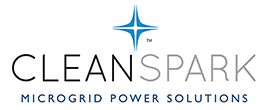About cookies on this site Our websites require some cookies to function properly (required). In addition, other cookies may be used with your consent to analyze site usage, improve the user experience and for advertising. For more information, please review your options. By visiting our website, you agree to our processing of information as described in IBM’sprivacy statement. To provide a smooth navigation, your cookie preferences will be shared across the IBM web domains listed here.
At its most basic, the grid is an interconnected network that delivers energy from a central power source to end users. In most homes and businesses, connecting to the grid is as simple as sliding a plug into a wall socket.
The grid is generally reliable, but it can be subject to both blackouts and brownouts, and it can be more expensive and less clean than alternative sources of energy like wind and solar. These alternative sources are becoming more and more popular, but they, too, have their limits when it comes to availability and storage.
Microgrids are designed to help companies meet power needs with a combination of traditional grid, solar, wind, fuel cell and other energy technologies. Ideally, they balance load requirements among the different sources, providing customers with steady, clean and cost-effective energy. CleanSpark was established in 2012 to help organizations develop their own microgrids.
Microgrids are not one-size-fits-all endeavors. Whether they’re meant to address the energy needs in a single household or in a massive, interconnected and geographically dispersed series of buildings, microgrids are complex, and the number of factors that go into optimizing them can be mind-boggling. Rich Inman, Director of Data Analytics at CleanSpark, estimates that the microgrid optimization process evaluates tens of millions of variables in a sparse matrix that may contain as many as 10²⁰ elements.
Easy Integrations
Integrates directly with the company’s existing technology stack to provide significant time savings
Data-driven decisions
Supports improvement of microgrid technology with vast amounts of valuable data
For several years, Inman and the team at CleanSpark used the MATLAB computing environment to develop their offerings. But as the company grew, the way the team wanted to optimize its modeling became more sophisticated. “We were pushing the cutting edge of the state of the art,” says Inman. To keep meeting its clients’ needs, CleanSpark needed a powerful optimizer that would work with the company’s existing technological infrastructure.
After careful research and cost-benefit analyses, CleanSpark selected IBM® ILOG® CPLEX® Optimization Studio software. Inman explains: “IBM came out on top in terms of not only price for our requirements, but also the support that we need to keep pushing forward.” With help from IBM Business Partner Newcomp Analytics, CleanSpark began by testing the software on a subscription basis. Six months and many successful benchmarks later, CleanSpark purchased perpetual licenses for the IBM software.
At the highest level, the CPLEX solution is helping CleanSpark solve optimization models, but as the company’s Chief Technology Officer (CTO) and Principal Architect Amanda Kabak explains, it’s more than that. With different data around each customer’s historical energy consumption, the utility rates it operates under, sizing constraints and more, the equation differs radically from engagement to engagement. Not everyone has the same goals, either. Some customers may prioritize internal rate of return, others may be more focused on sustainability or resilience.
Learn more about IBM Analytics.
“You can’t just write regular programming code for it,” Kabak explains. “You’ve got to model each of these things in an equation, and you’ve got to get that equation balanced and optimized. What CPLEX does is it actually solves this thing.”
In helping CleanSpark solve its most complex problems, IBM CPLEX Optimization Studio software has brought about significant time savings for the organization. As Inman explains, the fact that the software integrated seamlessly with CleanSpark’s technology stack made it possible for him to build the organization’s optimization on his own, in a matter of months.
The solution also places CleanSpark well ahead of the competition by providing a more holistic answer to the energy optimization problem. Kabak explains: “It’s a 100% differentiator in the market. A lot of our competitors will do somewhat similar modeling, but they will not optimize. We’re solving a much more complex problem and giving our customers much more useful information.”
Lastly, the IBM solution sets CleanSpark on a path toward providing increasingly valuable information to its customers. Each project CleanSpark completes results in a massive amount of data that the CleanSpark team can then analyze further to find new avenues for optimization. As a result, the company can continue to refine its microgrid technology, improving not just its product but its entire approach to energy consumption. Kabak concludes: “All of this data is helping us position CleanSpark as a thought leader in the renewable space. We’re contributing to the global ecosystem of knowledge.”
CleanSpark (link resides outside ibm.com) is dedicated to helping customers optimize their energy usage through the use of microgrid technology. It works with companies across the globe, and from all industries, to design, develop, install and maintain custom microgrids. Although primarily a software company, CleanSpark also offers exceptional service. Headquartered in San Diego, California, it employs approximately 50 people.
About Newcomp Analytics
Headquartered in Ontario, Canada, IBM Business Partner Newcomp Analytics helps customers in banking, education, healthcare and other industries obtain powerful insights using analytics. It has provided more than 400 enterprises in North America with the right tools, software and expertise to make sense of their data. Newcomp Analytics was founded in 1991 and employs approximately 100 people.
Legal
© Copyright IBM Corporation 2021. IBM Corporation, Watson and Cloud Platform, New Orchard Road, Armonk, NY 10504
Produced in the United States of America, July 2021.
IBM, the IBM logo, ibm.com, CPLEX, and ILOG are trademarks of International Business Machines Corp., registered in many jurisdictions worldwide. Other product and service names might be trademarks of IBM or other companies. A current list of IBM trademarks is available on the web at “Copyright and trademark information” at https://www.ibm.com/legal/copytrade.
This document is current as of the initial date of publication and may be changed by IBM at any time. IBM Business Partners set their own prices, which may vary. Not all offerings are available in every country in which IBM operates.
The performance data and client examples cited are presented for illustrative purposes only. Actual performance results may vary depending on specific configurations and operating conditions. THE INFORMATION IN THIS DOCUMENT IS PROVIDED “AS IS” WITHOUT ANY WARRANTY, EXPRESS OR IMPLIED, INCLUDING WITHOUT ANY WARRANTIES OF MERCHANTABILITY, FITNESS FOR A PARTICULAR PURPOSE AND ANY WARRANTY OR CONDITION OF NON-INFRINGEMENT. IBM products are warranted according to the terms and conditions of the agreements under which they are provided.

